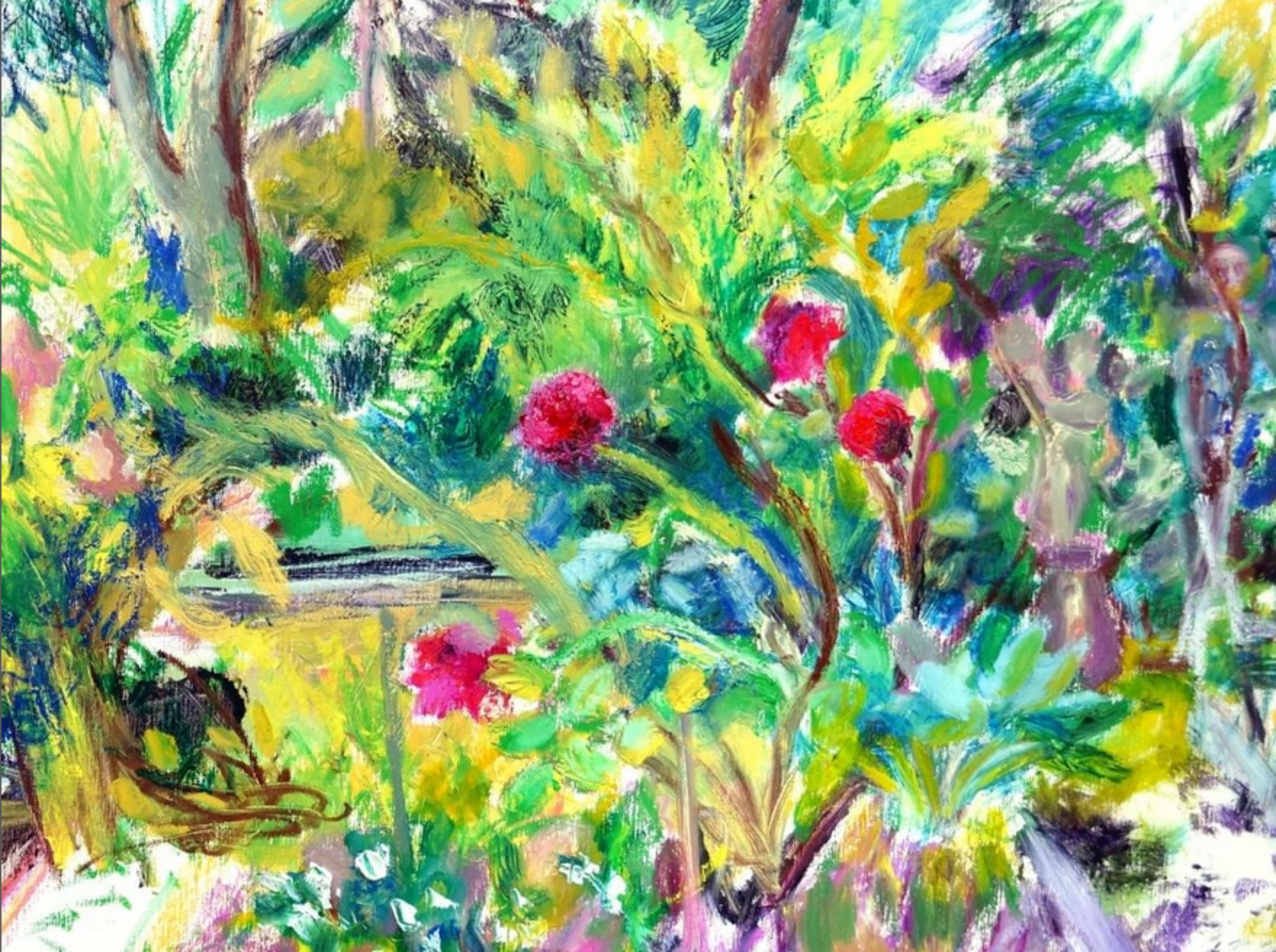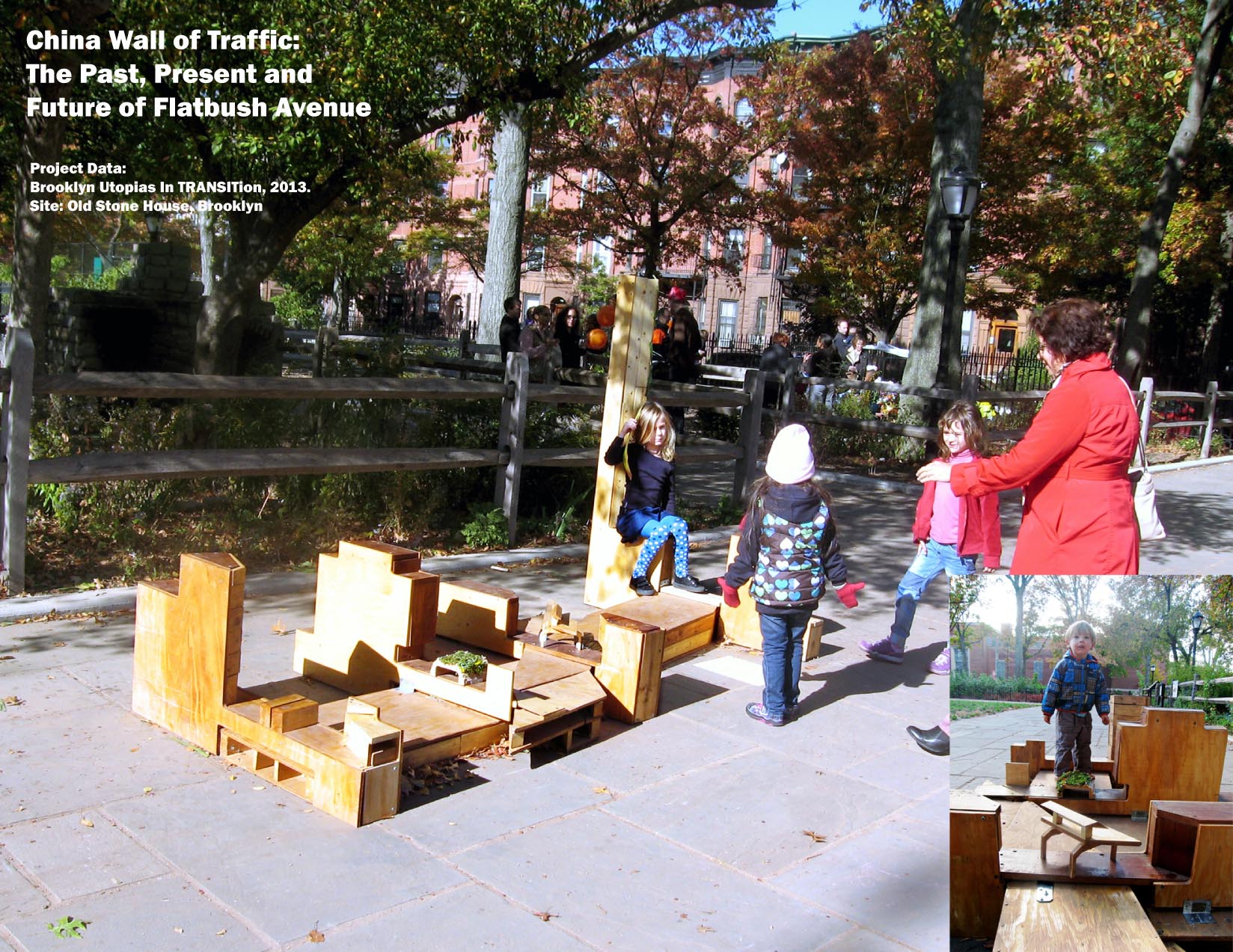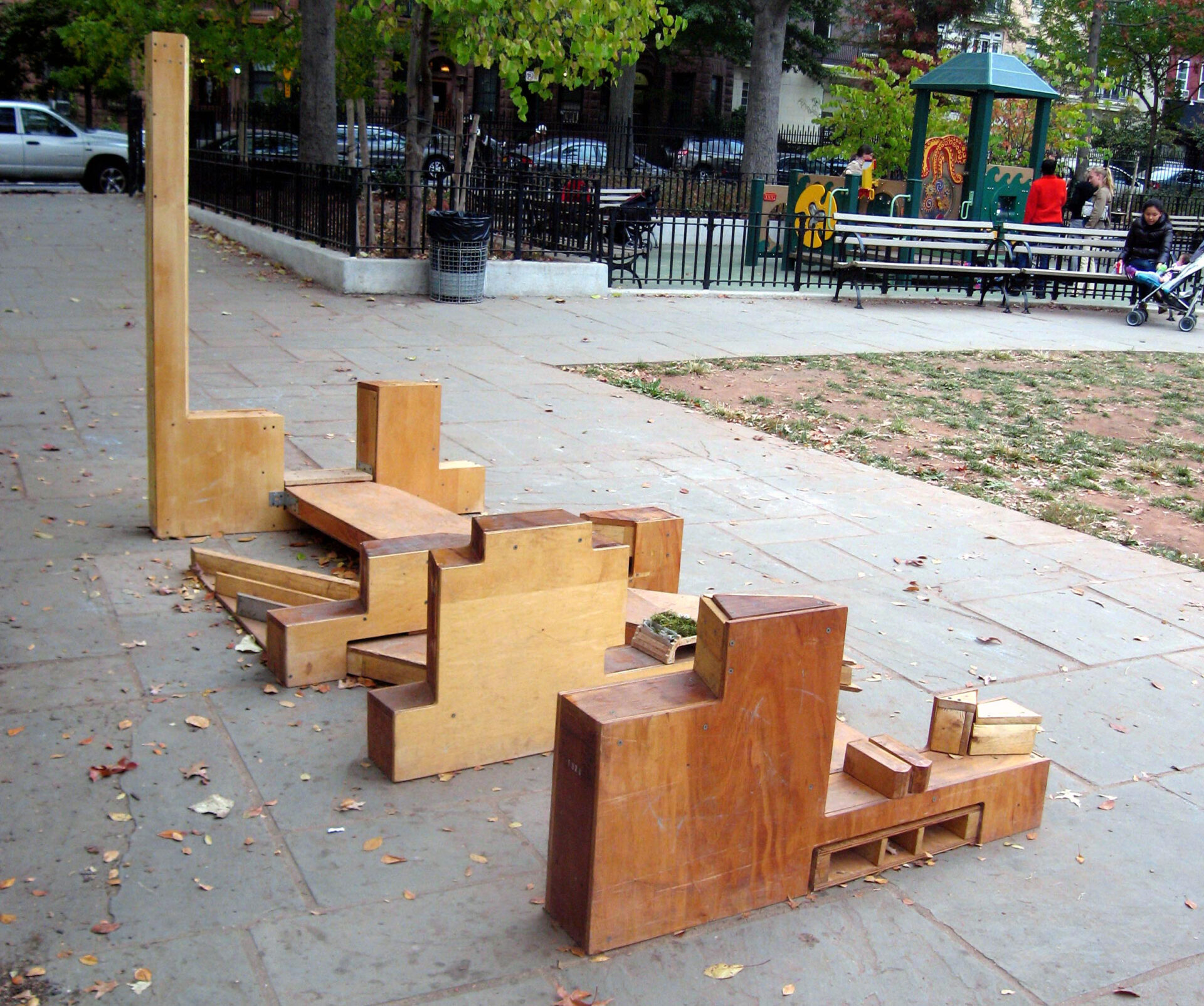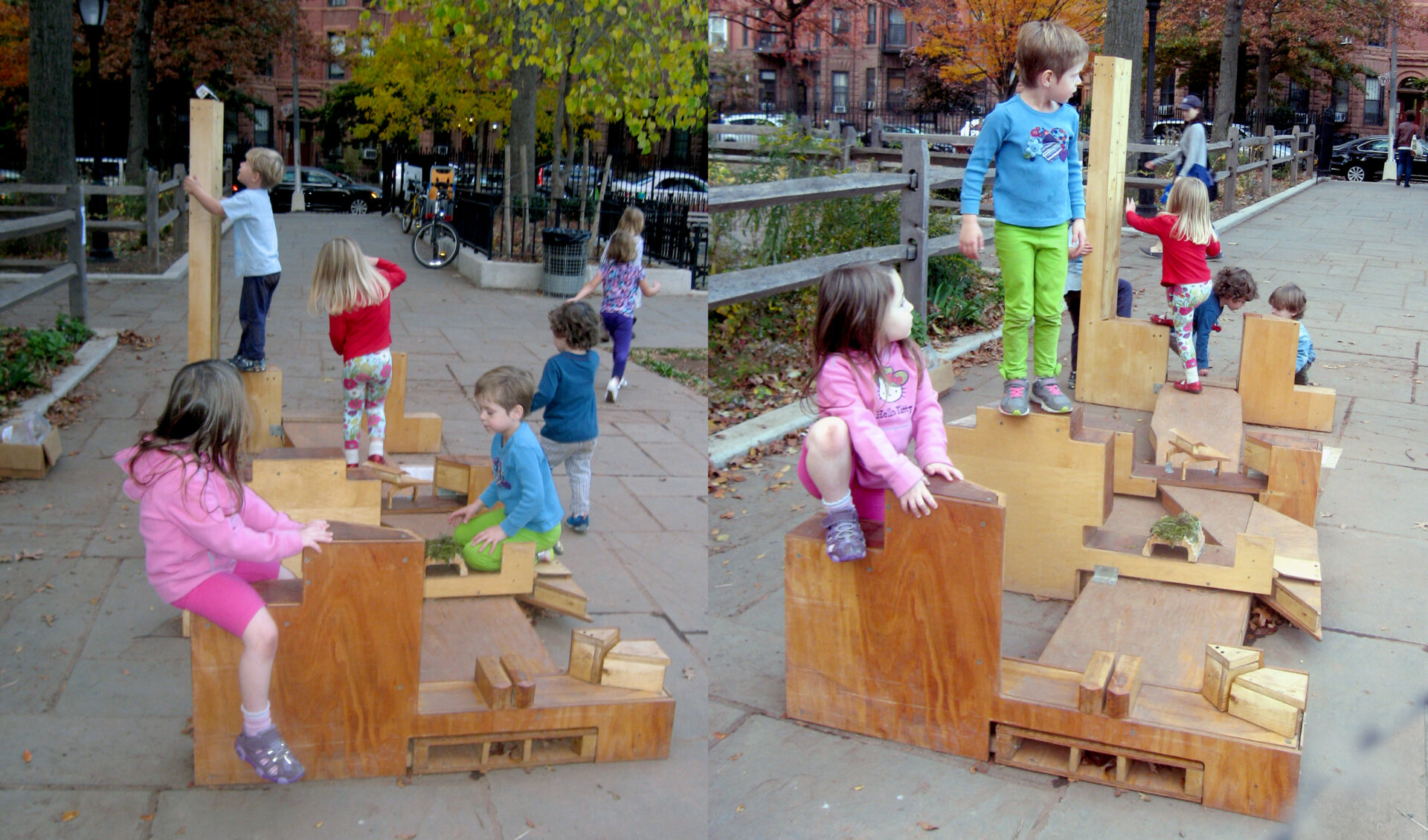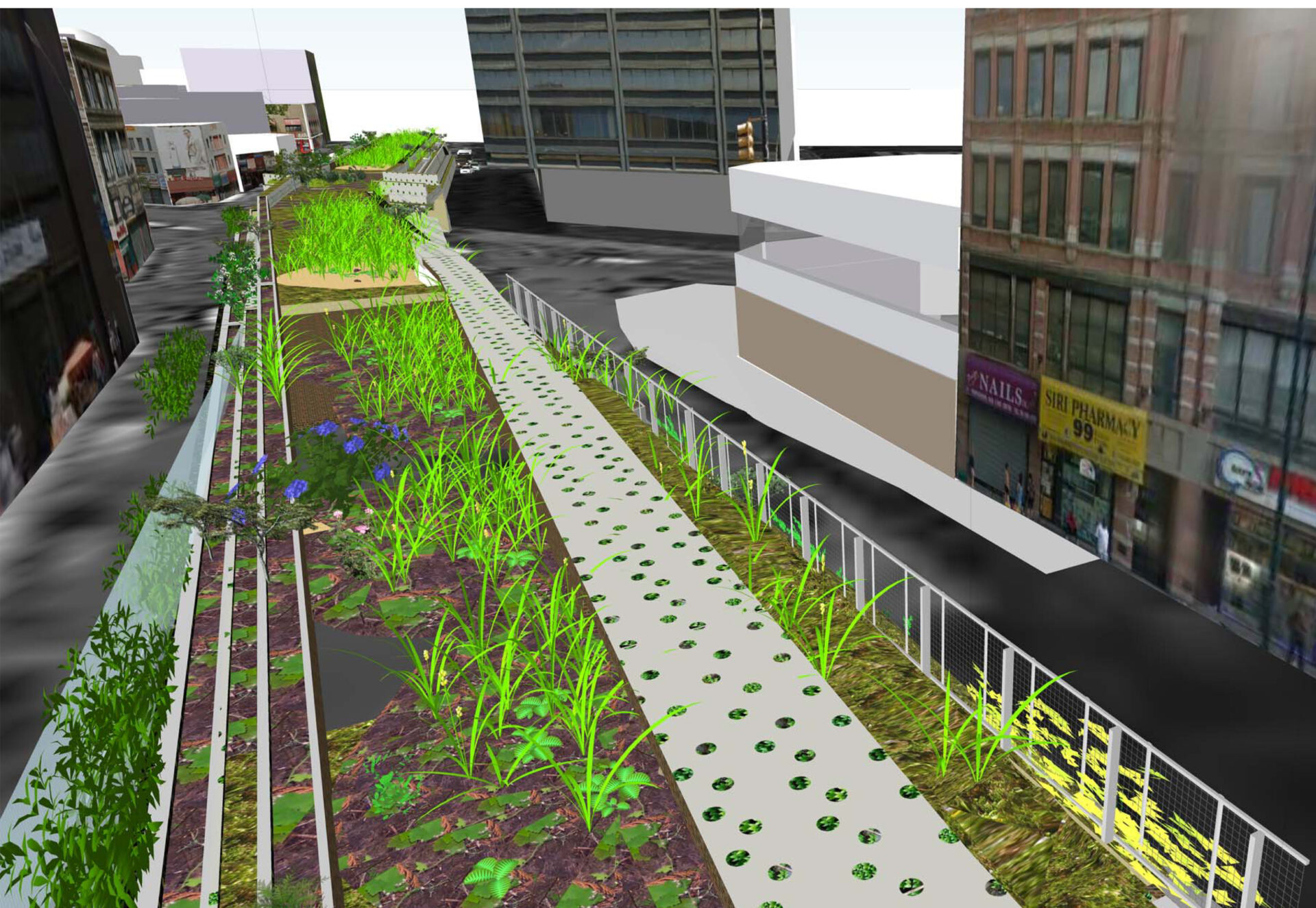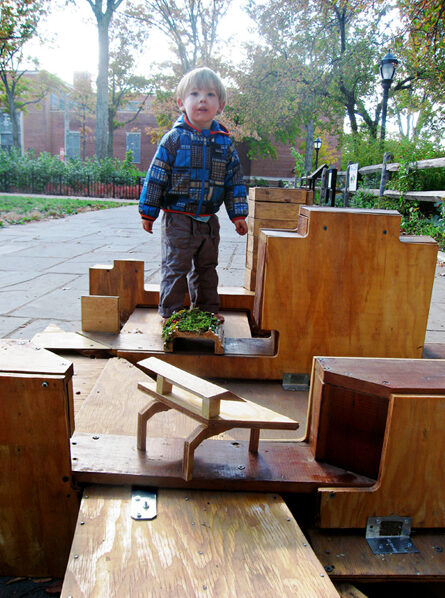
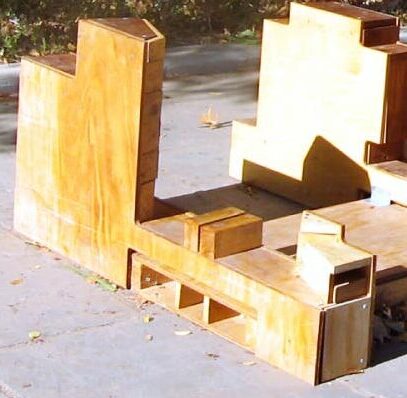
Temporary installation for the exhibition, Brooklyn Utopias: In TRANSITion, at Old Stone House, Brooklyn. 9’ l x 4’ w x 5’6” h, plywood and scrap wood, 2013.
In the 1950s Robert Moses described Flatbush Avenue as a China Wall of Traffic. The project was made in 2013 just when the first tall building was built on Flatbush Avenue, adding height to the road’s role as barrier between neighborhoods already existing from traffic. The piece tells a story in time and space about the relationship between the street, the buildings and the intertwined subway tunnels for a two block stretch of Flatbush Avenue (between Dekalb and Lafayette). Although kids love to play fanciful games with the piece, one of my aims is getting viewers of all ages to think about the cross sections of different conditions- and what conditions they’d like to have.
The sculpture is an accurate 1/8″ scale model, and includes arcane details such as the lower level subway tunnel under the 2,3,4,5 tracks in the area of Nevins street, which was intended to connect with the BMT trains before the A train was built. Also shown are the trolleys that went over the Manhattan Bridge until 1929 and the Fulton El. I made this piece mostly with my own labor at a studio in Redhook using detailed drawings based on my research of historical and current conditions from maps, photographs, transit drawings and Google Earth. The piece is constructed from plywood, “found” wood scraps and off-the-shelf hardware.
Viewers can observe is that the streets had more diverse public use in the older sections: Flatbush at Dekalb in 1929 and Fulton at Flatbush in 1928 compared to the mid-block section (between Fulton and Lafayette) from 2013. The piece also proposes a future vegetated tunnel ( with a walkway above) which would contain the Flatbush Avenue express traffic.
